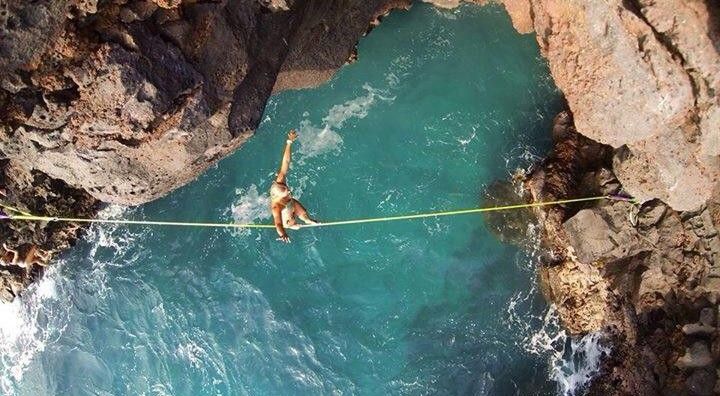
Don’t Slack on Your Balance!
Including balance training in your daily routine is just as important as brushing your teeth. Life is constantly challenging us in ways that may increase our chance of injury if we are not prepared. Daily activities such as walking (especially on uneven surfaces), climbing stairs, and even getting in and out of your car might increase your fall risk if you slack on your balance maintenance.
Speaking of “slacking”, have you ever cruised by a park, only to have your attention captivated by a group of seemingly circus-like individuals walking across a thin line between trees, much like a tightrope but with less tension? If you haven’t seen or heard of it before now, welcome to the world of slacklining. This activity, which started as a general off-season activity for rock climbers, has developed into an increasingly popular outdoor activity aimed toward developing advanced balance skills while also encouraging a deeper connection with nature and the community. Much like other athletic pursuits, slacklining boils down to a few general components that are essential in everyday life. In addition to a focused mind, proper body awareness, and relaxed breathing, it is absolutely impossible to walk the line without good balance.
There are three general systems that work together to create a properly balanced body and can be developed with the help of a physical therapist. These include:
- EYES: When we close our eyes, the whole world changes. Our vision gives us important feedback about our immediate surroundings, allowing us to plan accordingly. Have you ever tried to stand on one leg while closing your eyes? Taking one’s vision out of the picture will automatically make balancing more difficult, but it also makes the body work harder to use the other two systems which will only become stronger with time.
- INNER EAR: Inside each ear, we have three small canals coated with a waxy substance which is home to tiny crystals. These crystals are sensitive to our bodies’ movements and respond any time the head turns or the body’s position changes, such as doing a somersault underwater. Without proper function, this particular movement would cause the world around you to spin!
- PROPRIOCEPTION: Our position in space is constantly being assessed via tiny receptors in our muscles and joints called proprioceptors. This system is challenged by changing one’s base of support, such as standing on one foot, stepping onto uneven ground, or even a thin/shaky slackline hanging mid-air. When our proprioception is challenged, we rely on our vision and inner ear more; thus, a slackliner must gaze forward to focus his/her eyes on a stable spot while maintaining an upright head position despite the constantly moving body.
When you initiate your own balance training, you’ll be amazed at how challenging yourself daily can lead to significantly noticeable benefits.
So if the moment presents itself, get out and try something new and challenging, like slacklining! Or come up with your own home balance training practice to improve your balance skills. Meanwhile, be sure to check with your local physical therapist for a comprehensive movement and balance assessment to give the best of yourself toward whatever your passion may be.